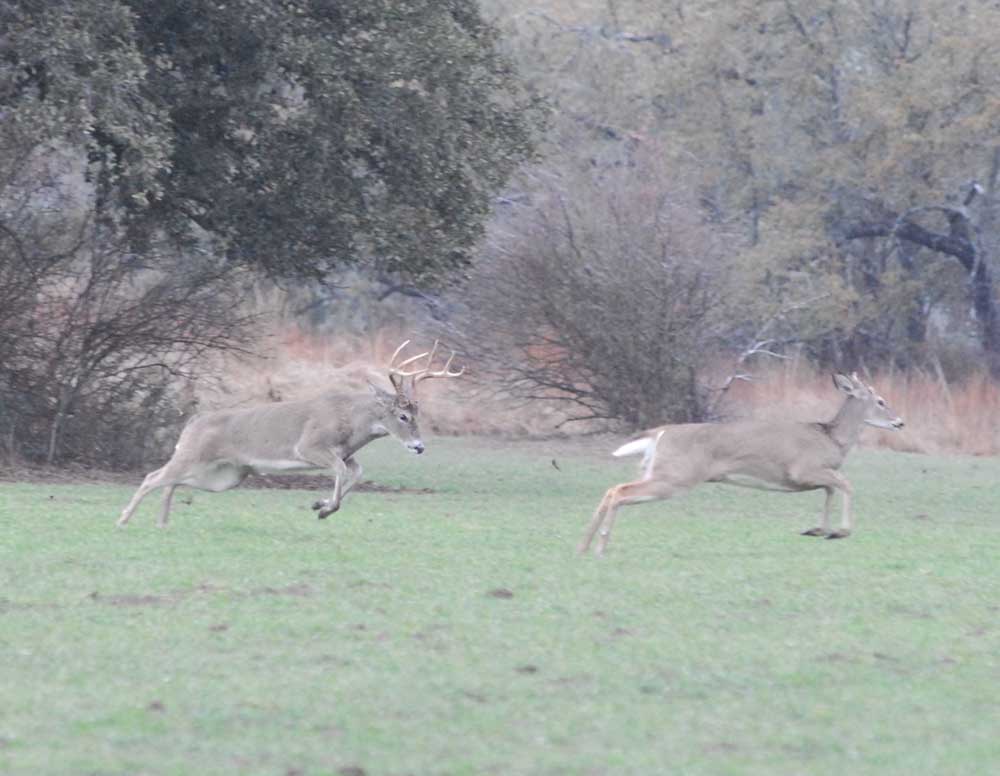Up First: Archery, early MLDP hunting kicks off deer season
Published 8:47 pm Friday, September 20, 2024

- Texas bowhunters and early gun hunters with Managed Land Deer permits should find plenty of mature bucks to set their sights on this season. (Steve Knight/Tyler Morning Telegraph)
Although the lines between archery and gun season have become blurred over the years because of early hunting with Managed Lands Deer permits, for true bowhunters it does not matter. For them deer season opens Sept. 28.
The history of an archery-specific season goes to 1959 when it was offered in a few counties. It was 1975 before the first statewide season, and then a hunter was required to purchase a $3.25 stamp to participate.
Trending
For more than two decades bowhunters owned October in Texas, but that changed in the late 1990s with the introduction of MLDPs, which opened the door to gun hunters to get an early start on their recommended harvest.
Today there is over 29.6 million acres enrolled in the MLDP program. While that number seems high, it is only about 26 percent of the total white-tailed deer habitat in the state.
That leaves plenty of room for the estimated 162,000 bowhunters, who during the entire 2023-24 hunting season harvested more than 66,000 deer.
While early Texas bowhunters were looking for a pre-season before picking up their rifle during the regular season, today’s hunters have matured into sportsmen looking for a challenge beyond dropping a deer at a feeder.
“Over the last several seasons, an average of 52 percent of archery harvest actually occurs during archery-only season and the remaining 48 percent of archery harvest is spread throughout the remainder of the general season. For the most part, bowhunters enjoy the challenge of a more primitive means of hunting and to top it off, they have an extra 35 days to hunt,” said Blaise Korzekwa, Texas Park & Wildlife Department white-tailed deer program leader.
Whether hunting with a bow or rifle, hunters across most of the state should be looking at a good antler year. However, there are noticeable exceptions.
Trending
“While much of the state should expect above-average to average antler quality this season, portions of the Edwards Plateau and southwest Texas were the unfortunate bullseye of drought conditions earlier this spring and may experience average to slightly-below average antler quality and fawn recruitment,” Korzekwa said.
He added statewide that good fawn recruit in recent years should mean a number of middle-aged and mature bucks can be found this year.
“Even those regions that missed out on spring rainfall will still have a good opportunity to harvest a mature buck,” Korzekwa said.
However, hunters tied to feeders in areas that received good rains in early September could experience a slow start to the season as deer switch to fresh native vegetation.
In the Post Oak and Pineywoods regions of East Texas the October season will not be as critical for hunters to take a doe as it has in the past. Eastern Texas hunters without special permits have been restricted to a single doe that could be taken during the October season by archery hunters or during the first 16 days of the season. The antlerless season has been expanded to 30 days during the regular season, running Nov. 2-Dec. 1, and includes Thanksgiving weekend. The extension comes with the growth of the East Texas deer population.
Hunters in some Chronic Wasting Disease zones will again be required to have their kill tested this season, however, there are others redesignated for voluntary testing.
“These voluntary zones will reduce the burden on hunters having to test every harvested deer, but we still strongly encourage hunters to test harvest in these zones as CWD has been detected in the area in either a free-ranging deer or captive breeder deer. A list of CWD zones and testing requirements can be found on the TPWD CWD webpage (https://tpwd.texas.gov/huntwild/wild/diseases/cwd/),” Korzekwa said.
He also recommends hunters statewide at least have some of their deer tested, and to watch for any deer that appears sick.
“Even if hunters outside of a CWD zone only test a percentage of their harvest, the distribution of testing will give hunters confidence that the disease is not yet detected in their area. Although deer with CWD tend to not show visible symptoms until the disease begins to progress to its fatal stages, we recommend hunters notify their local TPWD wildlife biologist of any sick deer they may see,” Korzekwa said.
The department has also released new rules regarding processing of deer in camp.
“Hunters now have the option to debone their harvest at the property, provided that they retain proof of sex, the meat is kept in whole muscle groups (not sliced, chopped, etc.), and meat from multiple deer is kept in separate bags or containers and not mixed with other deer while transported,” Korzekwa explained.
However, with that change comes new rules on carcass disposal if not done by a processor or on the property where the deer is harvested.
If a hunter disposes of their deer carcass elsewhere, it must be done with a commercial trash service, but can also be taken directly to a permitted landfill or must be buried no less than three feet below the ground surface.
The early archery season closes Nov. 1 followed by the opening of the regular season Nov. 2.
— Contact Knight at outdoor@tylerpaper.com






